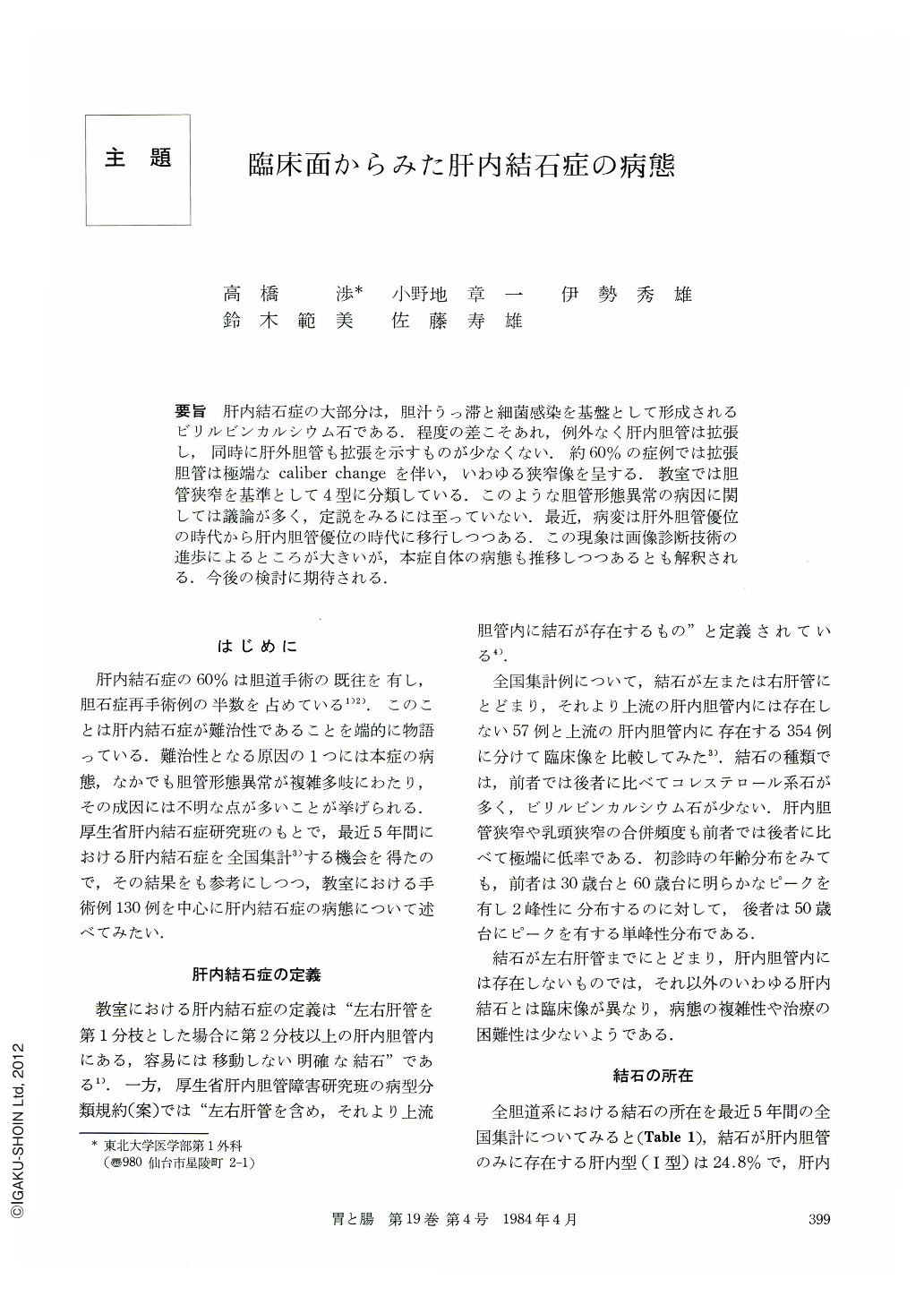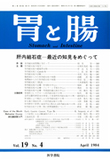Japanese
English
- 有料閲覧
- Abstract 文献概要
- 1ページ目 Look Inside
要旨 肝内結石症の大部分は,胆汁うっ滞と細菌感染を基盤として形成されるビリルビンカルシウム石である.程度の差こそあれ,例外なく肝内胆管は拡張し,同時に肝外胆管も拡張を示すものが少なくない.約60%の症例では拡張胆管は極端なcaliber changeを伴い,いわゆる狭窄像を呈する.教室では胆管狭窄を基準として4型に分類している.このような胆管形態異常の病因に関しては議論が多く,定説をみるには至っていない.最近,病変は肝外胆管優位の時代から肝内胆管優位の時代に移行しつつある.この現象は画像診断技術の進歩によるところが大きいが,本症自体の病態も推移しつつあるとも解釈される.今後の検討に期待される.
In view of the type of gallstone, most intrahepatic gallstones are namely the calcium bilirubinate stones generated on the basis of bile stasis and bacterial infection. In all intrahepatic gallstone patients, their intrahepatic bile ducts show the dilatation with varying degrees, mostly coupled with the further extrahepatic bile duct dilatation. In nearly 60% cases, the dilating intrahepatic bile duct is accompanied with so-called stenosis, a marked narrowing in caliber. Many debates have been held about whether it indicates the presence of true stenosis or relative stenosis derived by the adjoined site of dilatation. Using cholangiography, the intrahepatic gallstones were classified into four types according to the presence or absence of such stenosis. The non-stenotic type and the lower stenotic type had been predominating in the past. Currently, the incidences of these types have shown to be decreasing and the upper stenotic type and intrahepatic stenotic type have rather been increasing in number. These changes may be attributed to the improvements of the diagnostic measures for hepatobiliary diseases, especially in the progress of imaging methods. Further efforts should be continued to clarify the etiology of the intrahepatic bile duct stenosis.

Copyright © 1984, Igaku-Shoin Ltd. All rights reserved.


